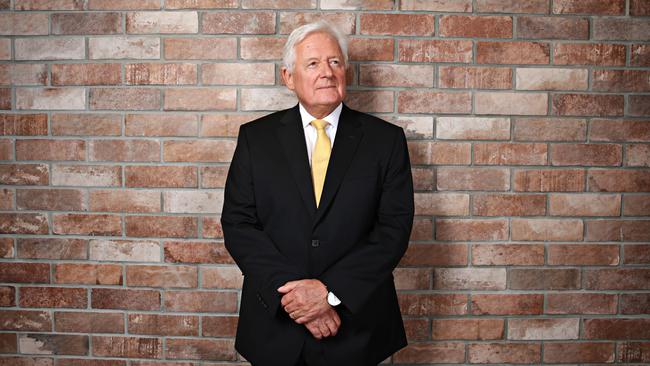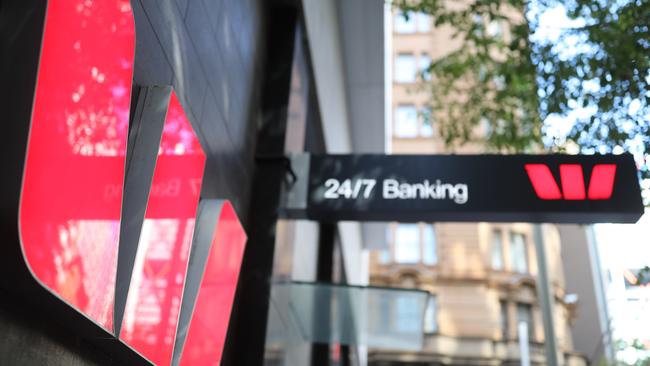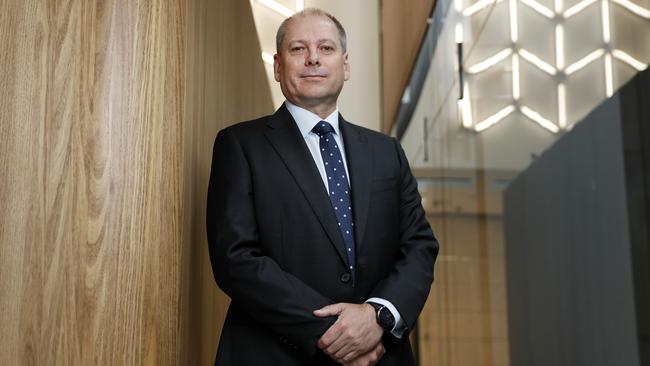
Costs have drifted away badly, profit margins are crunched and processes across the sprawling bank are so stifling that they are stopping any change agenda in its tracks.
And nearly two years after the $1.3bn Austrac anti-money laundering explosion ripped through the bank, shareholders are running out of patience.
While Austrac was the catalyst that sent the nation’s second biggest bank reeling, the landmark legal action over massive anti-money laundering breaches exposed deeper problems that had crept in to Westpac.

McFarlane, who during his time running ANZ turned culture upside-down at the Melbourne-based bank, is blunt in his assessment of Westpac.
It was lacking strategic focus and was competing in areas that made no strategic sense.
Before accepting the chairman’s post early last year, McFarlane, who most recently was chair of London-based Barclays, rolled out a 10-year spreadsheet of Westpac’s financial performance on his office desk.
“It was fair to say that the performance over the preceding five-years had been in decline,” McFarlane recalled on Wednesday.
The results and profits weren’t poor in that in the bank’s shares were still trading at a multiple of book value, and so relative to global banks it was holding its own.
“But it was in decline and therefore it was something we had to address.”
He acknowledged that on starting out at Westpac he found the bank’s embedded culture and processes frustrating.
Elsewhere costs were growing out of proportion and the Austrac case proved the bank was losing the digital fight.
McFarlane’s entire time as Westpac chair has coincided with the Covid pandemic.
His first decision on taking on the post in April 2020 was to promote Peter King as CEO from interim chief executive. The pace of the decision and to anoint someone who had been part of the regime he was trying to change was a risk.
With Covid rewriting the rules of economics as well as banking, McFarlane knew it was important to have management stability at the very top as well as giving King the full authority to make the changes needed.
McFarlane’s desire for quick wins has been slowed by being based in Melbourne with the city battling extended lockdowns. At the same time, change is hard to drive when 10 per cent of the loans across the entire banking system were placed in a deep freeze.
Despite a bruising shareholder strike at Wednesday’s annual meeting, McFarlane is backing in his chief executive for now. King, a former chief financial officer, knows the Westpac balance sheet inside out and where costs can be pared back rather than embedded.
As well as board renewal, two thirds of Westpac’s senior executives are now new, mostly from outside the bank. Management has been decentralised with individual accountability put in place, this McFarlane says has already improved the delivery of programs.
The bank is working hard to smooth its relationship with regulators and is pulling back from its litigious instincts. It is pushing ahead with the sale of its BT Panorama wealth platform and has cut free its auto dealer financing and leasing business.
Lending lapse
Even so, in the biggest home lending bull market Australia has seen in more than a decade, Westpac shares are up just 7.3 per cent so far this calendar year.
That compares to 10 per cent for the broader S&P/ASX 200 and well short of cross-town rival Commonwealth Bank, which is up 16 per cent this calendar year. The two Melbourne banks, ANZ and National Australia Bank, are up 20 per cent and 25 per cent respectively.
Adding further salt to the wounds, a sluggish share price performance meant Westpac had to sweeten the terms of its monster $3.5bn buyback, blunting some of the impact of the program.
After CBA’s massive Austrac implosion and management overhaul it took two years for that bank’s shares to turn positive again. It was another six months again for CBA shares to start thriving under chief executive Matt Comyn. And while Covid provided massive disruption, CBA shares last month hit an all-time high of $110 each.
Westpac hit its two-year Austrac anniversary on October 1 with its shares at a 10 per cent discount from the day the civil action was launched. Today that discount has deepened to more than 20 per cent from when the Austrac explosion went off. This reinforces the idea that the problems at Westpac are broader than just Austrac.
Costs will be the biggest big challenge for Westpac’s King. A lot of market credibility relies on him meeting the $8bn in savings target by 2024.

Overall this is a massive exercise, which on current run rate requires an overall 11 per cent in cost reductions at a time the bank needs to double down its investment in technology.
McFarlane too, is on the hook for these savings given he has also committed to investors lower costs will be reached starting from 2022.
He told investors on Wednesday that $1.9bn of costs savings are as good as banked with $1.1bn in one-off spending on simplification programs rolling off and another $800m set to walk out the door with businesses that are now in the process of being sold.
Westpac’s other major vulnerability – its soft profit margins – should find some reprieve as customers move back to variable loans while the ultra-cheap fixed rate mortgages roll off.
As a general rule banks generate lower profit margins from fixed loans and Westpac’s fixed book has almost doubled through the Covid loan rush. This has been particularly painful for Westpac, which has generally benefited from high-margin loans from interest only and investor lending. The prospect of a Reserve Bank rate rise later next year is a boon for banks looking to revive interest spreads.
An X-factor for Westpac’s path to recovery remains the prospect of the spread of a new Omicron Covid strain forcing parts of the economy into shutdown again – particularly around tourism – which will force all banks to take on costly provisions again.
McFarlane on Wednesday declared he wanted a simpler, customer-first oriented bank.
But it was back to the future for many with shades of former Westpac chief executive David Morgan who set a lofty ambition of a simple bank and one where “customers should only have to ask once in getting the service they deserve and having any problems fixed”.
That promise was made at Westpac’s annual meeting at the Melbourne Convention Centre exactly 19 years ago.
johnstone@theaustralian.com.au






John McFarlane has always been about pushing the big ideas but as Westpac chairman he will be overseeing a flabby bank that needs to get the small things right.